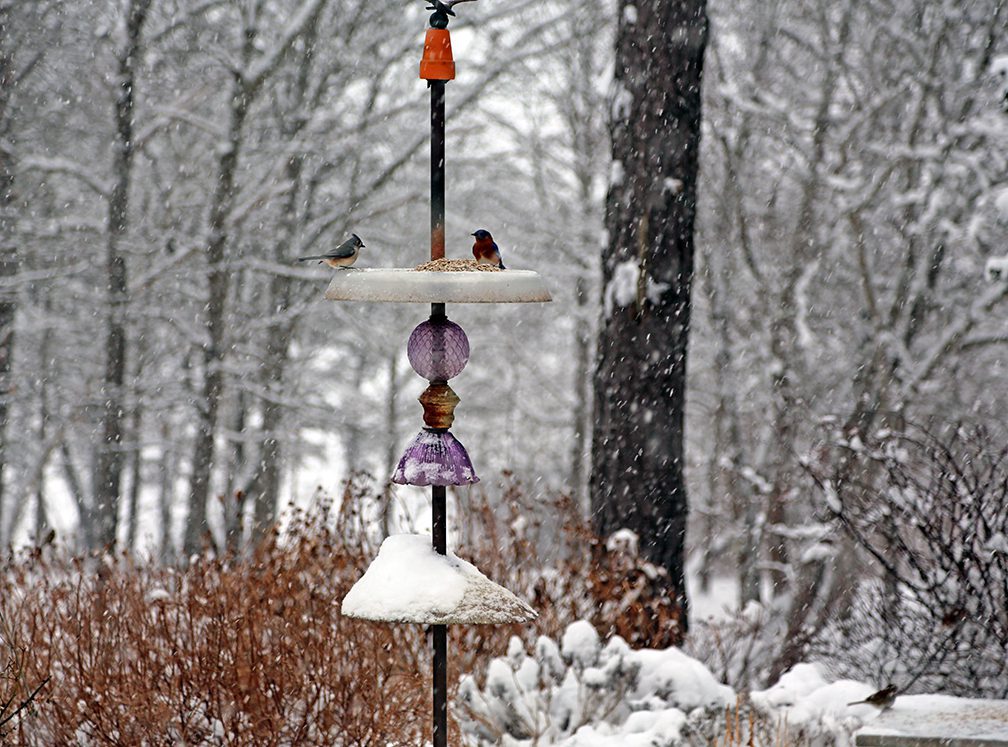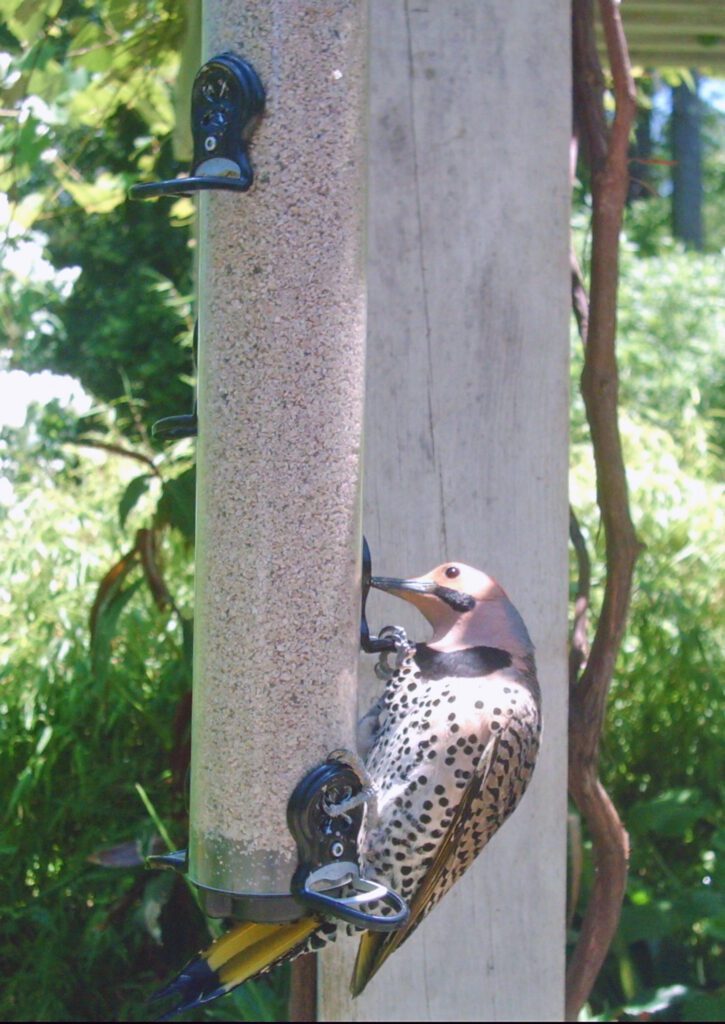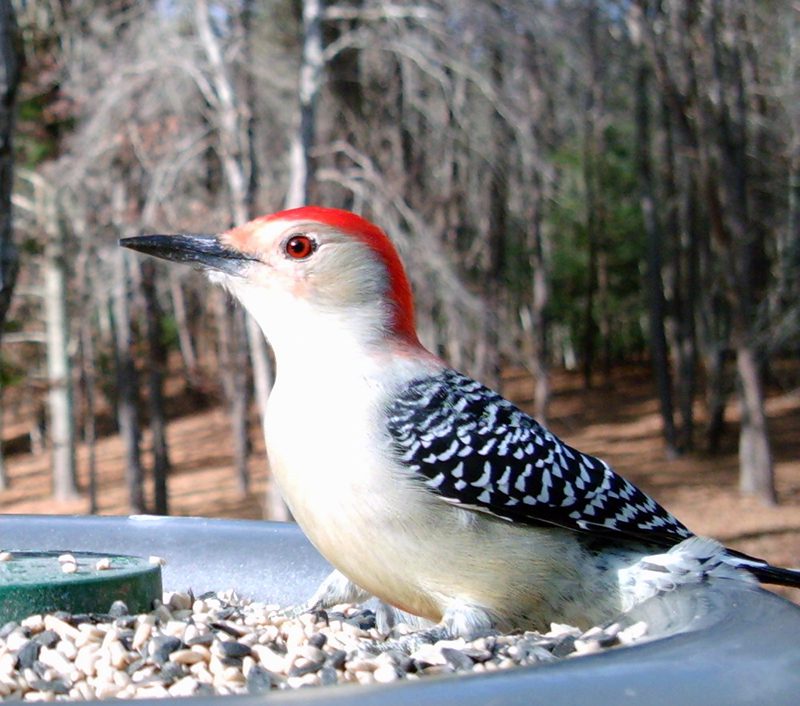Cape Cod Birds in Winter
Cape Cod Birds in Winter
My husband and I get great pleasure from the birds in our yard. We take delight in seeing the kaleidoscope of colors and motion that they provide twelve months of the year. “The bird ballet,” I call it. Although we provide seed and fresh water in all seasons, in the winter it’s not as much for our enjoyment as it is for their survival. The food and freshly filled birdbath that makes us smile all summer and fall is essential for a bird’s existence in the winter and early spring.
Here is what I’ve learned from feeding birds on the Cape for over 20 years:
- When you provide shelled sunflower seed, or a blend of mostly shelled with a few in-shell seeds, you attract a wide range of birds and it makes less mess in the garden. Less expensive bird blends often include seeds that most birds don’t eat, and these just fall to the ground and grow in the warm season. More weeds to pull! No thankyou.
- With mixed seeds there are types that the birds don’t prefer, and these fall to the ground to attract rats. If you want to avoid rats, feed only shelled sunflower seed and only put out what the birds will eat in one day.
- We don’t put out suet from May through October because there are insects that provide protein in the warm season. But in the winter we place pure Suet in our feeders because this is pure suet without any of the seeds or other ingredients that the birds may or may not want. Again, this attracts a wide range of birds from all of the woodpeckers to the chickadees that eat the crumbs that the flickers send flying.
- It’s important to put out some fresh seed around 2 o’clock in the winter. In the coldest weather the birds need to take in calories in the late afternoon that will sustain them during the very long nights. But since they hunker down in their sheltering places just before dark it’s important to put that seed out two hours before sundown.
- Fresh water is as valued as seed…sometimes more so! We have a heated birdbath and I try to change the water twice a day. Birds will drink and bathe in a heated bath so emptying out any water that contains bird poop is important. The heater we got at Hyannis Country Garden has lasted for several years.



In addition to providing bird seed, suet and fresh water, you can support Cape Cod’s birds by planting a diverse selection of plants in your yards and gardens. Native holly, Eastern red cedar, wild cherry trees, oaks, bayberry and many other native plants will attract birds of all sorts. Watch for future posts about specific plants that sustain our birds and provide a beautiful landscape for you to enjoy in all seasons!
12 Comments
Leave a Comment
Subscribe To Our Newsletter
Sign up for our weekly email about sales and events.

This is a very nice addition to your already excellent newsletter.
Thanks, Naomi. We update our blog weekly with something that’s of interest to those who love their Cape Cod landscapes as much as we do, and a link to that post is usually at the bottom of every newsletter. I’m so glad you enjoy them both!
What a pleasurable mini read on this wintry night. Thank you for the tips: 2 o’clock feeder fill and heated water. Very welcome newsletter.
Thank you, good advice!
Thanks for reading and responding, Bob. Happy New Year!
I so appreciate you and the knowledge you share. May this new year be good to you and those you love.
Thanks, Julia! Happy New Year to you and to all the HCG customers and readers.
Julia – wishing you all the best for the New Year as well.
Read every article and save them in a file to refer back too. Thanks
That’s so nice to hear, Linda. Thanks!
This particular article on feeding the birds was worth re-reading this weekend (March 4-5), when the temperatures are forecast to go down to the teens and maybe single digits. I’m making sure to replenish the water in my heated birdbath every day thanks to you, not to mention the suet feeders. The birds are really flocking to both. They seem to know.
Now if there were just something I could do to keep the big-leaf hydrangeas happy tonight. . .
I hope that the hydrangeas survive the spring cold snaps too, Emily!